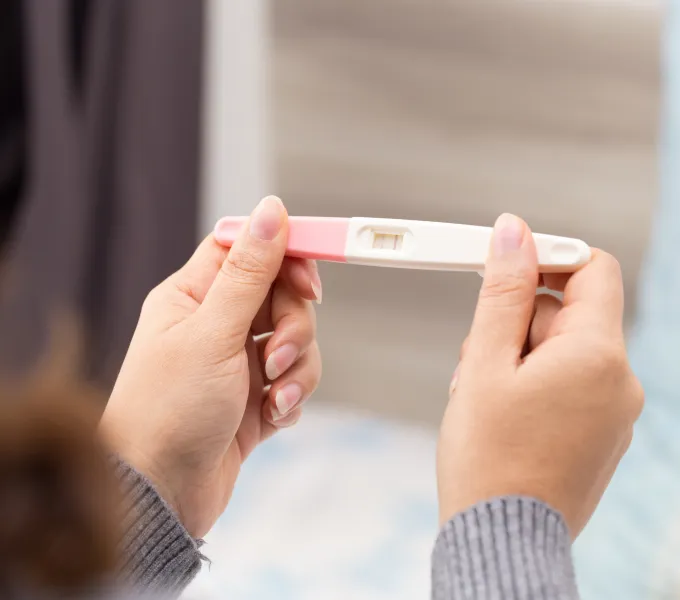
Fertility and Physical Therapy
What causes infertility in women?
It is estimated that infertility affects up to 13% of women between the ages of 15 and 49 years, but if you are struggling with infertility, much of your experience can feel isolating and insurmountable. Infertility is defined as having difficulty conceiving after 1 year of trying to get pregnant. If this has been your story, you may have noticed increased anxiety, depression, stress, relationship conflicts and even a tendency to distance yourself from pregnant women or new parents.
Depending on where you are in your journey to conceive, you may also be experiencing medication or hormonal therapy side-effects, financial burden, and uncertainty regarding you and your family's future. Each woman's journey is unique, so while there is no "one size fits all" answer to infertility, there are some steps that you can take to better navigate this experience and try to improve your chances of becoming pregnant.
First, it's important to know that problems stemming from ovulation are the most common reason for infertility in women, according to the CDC. There are also links between infertility and diagnoses such as endometriosis and polycystic ovarian syndrome (PCOS). Speak with your healthcare provider to better understand what may or may not be happening within your own body in order to better understand what may be limiting your ability to ovulate or prevent miscarriage. Infertility stemming from hormonal or physiological imbalance will usually be treated by your physician with hormone regulation therapies, dietary and lifestyle modifications, and medications.
However, there are other explanations for infertility that extend beyond physiological reasons. Mechanical infertility occurs if there is a physical obstruction preventing sperm and egg from meeting. This type of infertility has been linked to scar tissue in the abdomen or reproductive organs typically following surgeries or disease. It has also been associated with inflammation and lymphatic blockage within the pelvis, thereby preventing proper blood flow to and away from the reproductive organs. Additionally, mechanical infertility can stem from an inability to tolerate penetration or disinterest in attempting sexual intercourse due to pain.
How does physical therapy help with infertility in women?
Pelvic floor physical therapy has been proven to help reduce mechanical infertility through various manual therapy techniques and self-management strategies. Origin's trained physical therapists can help improve your scar tissue mobility and reduce adhesion restrictions using hands-on scar and myofascial mobilizations. Your physical therapist can also use visceral and fascial mobilization techniques to allow for proper blood flow and lymphatic drainage to your pelvis. Furthermore, our physical therapists are able to educate you in exercises like diaphragmatic breathing, as well as proper use of vaginal dilators to improve your tolerance to intercourse, if needed. Pelvic floor physical therapy has also been shown to reduce symptoms and improve pain associated with PCOS and endometriosis, some of the most common physiological causes of infertility.
As with any other condition, at Origin, we encourage you to seek support from a multidisciplinary team to address your infertility. This includes working closely with your physician, counseling services, and therapists in order to help you manage any and all challenges that you may confront in trying to conceive. Our physical therapists are ready to join your team and provide evidence-based support to you during your journey, wherever it may lead.
Additional Reading and Sources
- Eisenberg, Esther, et al. "Infertility." Womenshealth.gov, 1 Apr. 2019, www.womenshealth.gov/a-z-topics/infertility.
- "FastStats - Infertility." Centers for Disease Control and Prevention, Centers for Disease Control and Prevention, 15 July 2016, www.cdc.gov/nchs/fastats/infertility.html.
- Harvard Health Publishing. "The Psychological Impact of Infertility and Its Treatment." Harvard Health, May 2009, www.health.harvard.edu/newsletter_article/The-psychological-impact-of-infertility-and-its-treatment.
- Kramp, Mary Ellen. Combined Manual Therapy Techniques for the Treatment of Women With Infertility: A Case Series. The Journal of the American Osteopathic Association, October 2012, Vol. 112, 680-684. LINK: https://jaoa.org/article.aspx?articleid=2094508
- Rice AD, Patterson K, Wakefield LB, Reed ED, Breder KP, Wurn BF, King CR, Wurn LJ. "Ten-year Retrospective Study on the Efficacy of a Manual Physical Therapy to Treat Female Infertility." Alternative Therapies. 2015.(21)3;32-40.
- Wurn, Belinda F et al. "Treating female infertility and improving IVF pregnancy rates with a manual physical therapy technique." MedGenMed : Medscape general medicine vol. 6,2 51. 18 Jun. 2004




